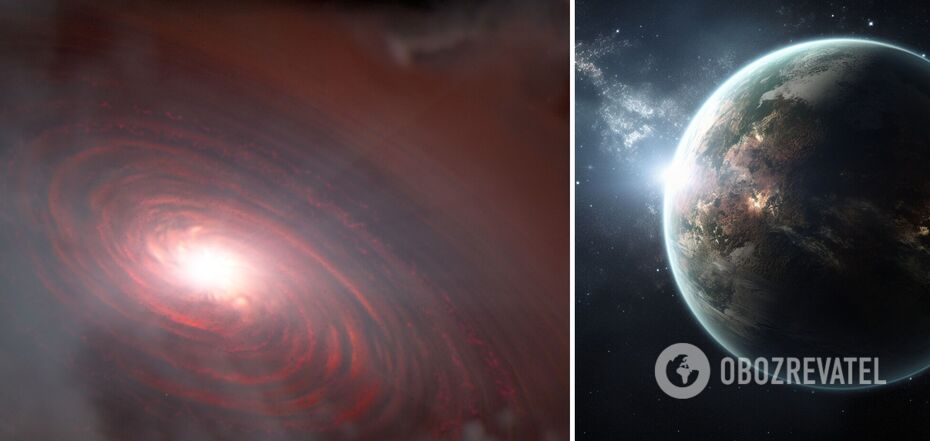News
Astronomers see newly formed planets floating in water around a young star for the first time
The James Webb Space Telescope (JWST) has enabled astronomers to see a young star system 370 light-years from Earth, where new planets are surrounded by water vapor in their orbits. Scientists have detected water vapor in protoplanetary disks before, but have never seen it where planets are forming.
NASA and the European Space Agency reported on the findings. The results of the study were also published in the scientific journal Nature.
"We have seen water in other (protoplanetary) disks, but not so close and not in the system where planets are forming," said Julia Perotti, a leading researcher at the Max Planck Institute for Astronomy (MPIA) (Germany).
The scientists named the distant planetary system PDS 70. It contains both inner and outer disks of gas and dust in which planets form. These disks are separated by a gap of 8 billion kilometers.
The MIRI instrument (Mid-Infrared Infrared Imager), which is installed on JWST, has discovered that the system's inner disk is filled with water vapor. It is assumed that rocky Earth-type planets, as well as sub-Neptunian planets, which have a radius smaller than Neptune in our solar system but may have a much larger mass, can form under these conditions.
Water vapor was detected at a distance of less than 160 million kilometers from the star. Our Earth orbits at a distance of 150 million kilometers from the Sun.
Astronomers note that no real planets have yet been discovered in the inner region of PDS 70, but there is clear evidence of the existence of protoplanets with raw materials for building rocky worlds in the form of silicates.
In their article, the scientists note that the detection of water vapor means that the rocky planets formed there will immediately have access to water.
"This discovery is extremely exciting because it explores a region where Earth-like rocky planets typically form," explained Thomas Henning, MPIA director and co-author of the paper.
There are already two planets in the system (PDS 70b and PDS 70c) that are similar in size to our Jupiter. These gas giants are located between two dust disks, and planet 70c may also have a satellite orbiting it.
Astronomers note that the fact that other planets have already formed in this system is a good sign for the future formation of other worlds.
As for the water vapor, the researchers assume that it was formed because hydrogen and oxygen atoms met in that region to form water. According to another version, water can migrate from the cold outer disk to the inner system.
The scientists also talked about another interesting aspect of the discovery. PDS 70 is a K-type star, which is colder than our Sun. Its age is estimated at 5.4 million years, which is a relatively old age for a star that is still forming planets, as the content of gas and dust in planet-forming disks decreases over time. So scientists are surprised that there is steam and rocky planets are forming there.
In the future, they plan to conduct new studies using other JWST instruments to gain even more insight into what is happening in the inner disk of the PDS 70 system.
Subscribe to OBOZREVATEL's Telegram, Viber, and Threads channels to keep up with the latest developments.



























